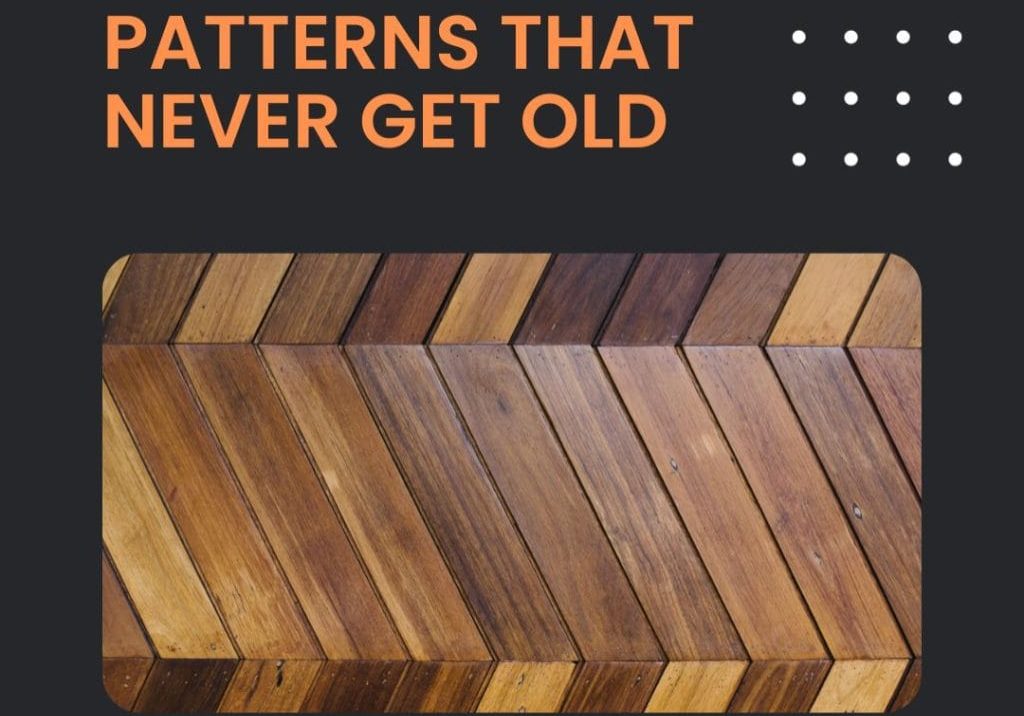When it comes to enhancing the aesthetic appeal and value of business premises, installing hardwood flooring over a concrete slab offers an elegant solution. It is a common misconception that concrete substrates pose a challenge to such upgrades. However, with the right guidance on how to install hardwood floors on concrete, one can seamlessly overcome this hurdle, transforming their work environment into a visually appealing and value-added space.
Understanding Your Concrete Slab
Before you begin installing hardwood floors on concrete, it’s crucial to understand the condition and characteristics of your concrete slab. This foundational knowledge will guide you through the rest of the installation process, ensuring a successful and lasting hardwood floor over your concrete base.
Explanation of Grade Levels
When planning to install hardwood floors on concrete, understanding grade levels is fundamental. Above grade refers to rooms located above ground level, typically with plenty of ventilation. On grade implies rooms on ground level, such as offices or shops. Conversely, below grade pertains to basement levels or any room situated below ground level, these areas often pose moisture-related challenges.
Assessing Moisture Levels In Concrete Slabs
Assessing moisture levels in your concrete slab is a critical step in the installation process of hardwood flooring on concrete. High moisture levels can lead to wood swelling, warping, or even mold growth, potentially compromising the longevity and aesthetic appeal of your new hardwood floor. Therefore, ensuring your concrete slab is sufficiently dry before installation is paramount to the success of your flooring project.
Preparation of the Concrete Substrate
Before delving into the details of laying hardwood floors on a concrete slab, it’s crucial to prepare the concrete substrate adequately. This step ensures a smooth and secure base for the hardwood, significantly influencing its longevity and performance. Let’s delve into the key steps involved in preparing your concrete substrate for hardwood flooring.
Steps for Ensuring a Dry and Level Concrete Slab
To ensure a dry and level concrete slab, start by applying a moisture barrier to prevent any potential damage from moisture seepage. Next, use a level to check the evenness of the slab, filling any low spots with a self-leveling compound. Finally, give the slab ample time to dry and cure before proceeding with the hardwood installation.
Necessity of a Vapor Barrier
Installing a vapor barrier is a crucial step in the preparation process when laying hardwood flooring on a concrete slab. It acts as a protective shield, preventing the upward migration of moisture from the concrete to the hardwood floor. Without this barrier, your newly installed hardwood floor can absorb moisture, leading to warping, cupping, or even mold and mildew growth.
Choosing the Right Hardwood and Materials
Selecting the appropriate hardwood type and material choices is a pivotal step when installing hardwood flooring over a concrete slab. These decisions will significantly impact the durability, aesthetics, and maintenance requirements of your flooring, thus profoundly contributing to your business premises’ appeal and value.
Differences Between Solid Hardwood and Engineered Wood
When choosing a hardwood floor to install over a concrete slab, you have two primary options: Solid Hardwood and Engineered Wood.
Solid Hardwood is made from a single, solid piece of hardwood. Its thickness allows for multiple refinishing over its lifetime, thus providing a long-lasting flooring choice. However, it’s more susceptible to changes in humidity and isn’t the best option for concrete slabs due to potential moisture issues.
Engineered Wood, on the other hand, is manufactured from multiple layers of wood, with a top layer of real hardwood. This construction makes it more stable and less prone to warping from humidity or temperature fluctuations, making it a more suitable choice for installation on concrete slabs.
Wood Type Suggestions for Various Slab Conditions
High Moisture Concrete Slabs: For slabs with high moisture content, engineered wood is highly recommended. Its multi-layered structure offers enhanced stability and resistance against moisture-induced warping.
Level and Dry Concrete Slabs: For dry, level slabs, you can opt for solid hardwood or engineered wood. Both can perform excellently when moisture is not a concern.
Uneven Concrete Slabs: For uneven slabs, engineered wood is a better choice. Its structural stability can withstand minor irregularities in the slab surface without compromising the flooring’s integrity.
Installation Methods
When installing hardwood floors on concrete, there are several methods to consider. The choice of installation method is crucial, as it significantly influences the performance, look, and longevity of your hardwood flooring. Let’s explore the various installation methods suitable for installing hardwood flooring over a concrete slab.
Plywood-on-Slab Technique
The Plywood-on-Slab technique involves installing a layer of plywood over the concrete slab to create a subfloor, onto which the hardwood flooring is then installed. This method provides a robust and stable surface for the hardwood, while also adding an extra barrier against moisture migration from the concrete to the hardwood flooring. It’s particularly advantageous for uneven concrete slabs, as it allows for a level flooring installation.
Sleeper System Installation
The Sleeper System Installation involves laying down wooden beams, or “sleepers,” on top of the concrete slab, creating a framework for the hardwood flooring. This method provides a well-ventilated and moisture-resistant base, ensuring a stable and durable platform for your hardwood floors, that effectively combats potential moisture issues.
Gluing vs. Nailing
Gluing: Gluing is recommended when installing engineered wood on a concrete slab. The adhesive bonds the flooring directly to the slab, ensuring a secure and stable installation. This method is especially beneficial for high-traffic areas, as the glued connection can withstand more wear and tear. However, gluing requires careful preparation to ensure a strong bond.
Nailing: Nailing hardwood flooring is preferred when a wood subfloor is present, but it is usually not suitable for direct installation onto concrete slabs. Despite this, some installers may use a special masonry nailer to secure the hardwood to the concrete. Always refer to your flooring manufacturer’s guidelines to ensure your chosen installation method is appropriate.
Acclimating Your Hardwood
Before diving into the installation process of hardwood flooring on concrete, taking the necessary steps to properly acclimate your hardwood is a critical factor that must be addressed. This phase ensures your hardwood adapts to the local indoor humidity and temperature conditions, ultimately enhancing its performance and durability post-installation.
Process of Acclimating Wood to the Environment
Acclimating wood involves leaving the hardwood in the room where it will be installed for a specified period, typically between 48 to 72 hours. During this time, the wood adjusts to the room’s humidity and temperature levels. This crucial step helps prevent future warping, swelling, or shrinking of the hardwood, ensuring optimal durability and performance of your installed hardwood floors on the concrete slab.
Assessing Readiness of Acclimated Wood for Installation
To measure if the hardwood is acclimated and ready for installation, use a moisture meter to check its moisture content. The ideal moisture level varies depending on the wood type but is typically between 6-9%. Compare this to the room’s humidity to ensure they’re balanced. If the measurements are consistent over several days, the wood is aptly acclimated and ready for installation.
Finishing Touches and Maintenance
Once your hardwood flooring is successfully installed over the concrete slab, the final task is to add the finishing touches and understand the necessary maintenance steps to preserve its beauty and durability for years.
Best Practices For Finishing The Installed Hardwood Floor
After installation, it’s essential to finish your hardwood floor to enhance its aesthetic appeal and durability. Use a high-quality polyurethane finish for a protective, glossy shine. Ensure the room is ventilated during the process, and apply multiple coats for the best results. Secure the finish with a hardwood floor polish to restore the floor’s shine and remove minor scratches.
Tips For Maintaining Hardwood Floors Over Concrete
Here are a few key tips to keep your hardwood floors looking their best.
Regular Cleaning: Sweep or vacuum your hardwood floors regularly to remove dust and dirt particles that can scratch the surface. Always use a soft-bristled broom or a vacuum cleaner with a hardwood floor setting to avoid causing damage.
Promptly Clean Spills: Spills should be cleaned immediately to prevent staining and to avoid moisture seeping into the wood, which could cause it to warp.
Use Protective Pads: Place protective pads under furniture legs to prevent scratching and denting of the hardwood floor.
Refinish as Needed: Depending on the foot traffic, consider refinishing your hardwood floor every few years to keep it looking new. Always hire a professional for refinishing tasks to ensure quality results.
When to Call In the Experts
While many aspects of installing hardwood floors on concrete can be DIY-friendly, there are scenarios when it’s best to call in the experts. Understanding when professional help is needed can save you time and unnecessary expenses.
Scenarios Where Professional Help Is Necessary
When dealing with uneven concrete slabs, professional leveling may be required to ensure a stable base for the hardwood floor. Highly damaged or cracked concrete slabs also necessitate expert intervention to ensure structural safety. Lastly, if you’re inexperienced in handling flooring adhesives or specialized tools, or if the project involves intricate designs or patterns, getting help from a professional installer will ensure accuracy and quality in installing hardwood floors on concrete.
Choosing The Right Contractor
Choosing the right contractor for installing hardwood flooring on your concrete slab involves careful consideration. Seek contractors with a solid reputation, proven experience with similar projects, and positive customer reviews. Verify their licensure and insurance to ensure legal compliance and protection. Lastly, compare quotes from different contractors, but keep the cost as your sole deciding factor – quality and reliability are equally, if not more, important.
Conclusion
Understanding how to install hardwood floors on concrete is paramount to achieving stylish, durable, and long-lasting flooring for your business space. The process may involve several critical steps, from acclimating the wood to installing it accurately to maintaining it post-installation. By prioritizing these steps, you can significantly enhance the aesthetic appeal and practical function of your business premises. So, don’t hesitate to invest in hardwood flooring on concrete – an upgrade that brings remarkable benefits and a touch of sophistication to any business environment.










